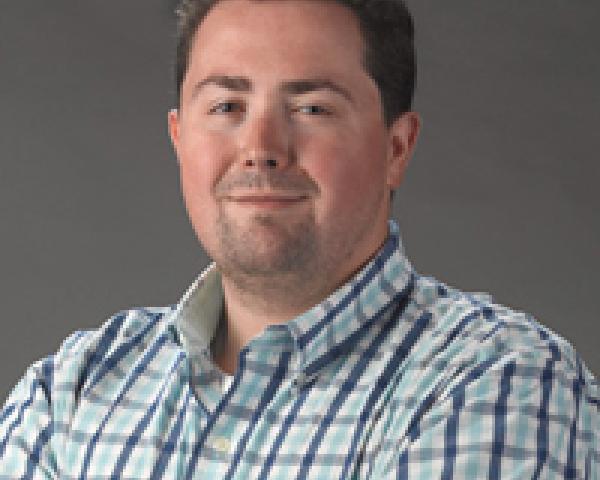


As rough as 2015 was for cyber security, 2016 will be worse. Small and medium-size businesses are especially vulnerable.




Get Involved
Our authors are what set Insurance Thought Leadership apart.
|
Partner with us
We’d love to talk to you about how we can improve your marketing ROI.
|

Byron Acohido is a business journalist who has been writing about cybersecurity and privacy since 2004, and currently blogs at LastWatchdog.com.
Some workers' comp claims develop a life of their own, and, before you know it, years have gone by. Here is how to get to a resolution.

 The Injured Workers Is 61 Years Old
Once an injured worker reaches age 62½, any buyout of future medical care must include a Medicare Set-Aside. (Buyout of medical benefits for an injured worker already on Medicare also requires a Medicare Set-Aside.) This adds work and delay. Sometimes, the MSA evaluation changes the parties’ view of the case. Stories abound about how the MSA process has torpedoed a settlement. Check your case inventory. If the injured worker is 61 years old, take steps now to close the claim before Medicare becomes a party to the proceedings.
Litigation Has Become a Way of Life
You’re in court every month. The number of claimed body parts keeps increasing; every treatment request is denied. Everyone mistrusts everyone else, including their own lawyers. Take a deep breath. Step back. This claim has a settlement value. The parties just need help figuring out what it is.
Trial Is Imminent
Nothing makes people think about settlement more than an upcoming trial date. You’ve lived with these facts for a long time; how can you be sure the judge will see things your way in the limited time available to put on the case? Often, a judge’s order is just the gateway to even more litigation.
Going to trial is a risk. Most people are uncomfortable with the lack of control. They are happier with a negotiated settlement reached through compromise. You won’t get everything your way, but you won’t lose on every issue either. Most importantly, litigation can end.
Take the First Step
Approach the other side about scheduling a mediation. If communication has broken down, contact the mediator first, and let her work on bringing the parties together.
The Injured Workers Is 61 Years Old
Once an injured worker reaches age 62½, any buyout of future medical care must include a Medicare Set-Aside. (Buyout of medical benefits for an injured worker already on Medicare also requires a Medicare Set-Aside.) This adds work and delay. Sometimes, the MSA evaluation changes the parties’ view of the case. Stories abound about how the MSA process has torpedoed a settlement. Check your case inventory. If the injured worker is 61 years old, take steps now to close the claim before Medicare becomes a party to the proceedings.
Litigation Has Become a Way of Life
You’re in court every month. The number of claimed body parts keeps increasing; every treatment request is denied. Everyone mistrusts everyone else, including their own lawyers. Take a deep breath. Step back. This claim has a settlement value. The parties just need help figuring out what it is.
Trial Is Imminent
Nothing makes people think about settlement more than an upcoming trial date. You’ve lived with these facts for a long time; how can you be sure the judge will see things your way in the limited time available to put on the case? Often, a judge’s order is just the gateway to even more litigation.
Going to trial is a risk. Most people are uncomfortable with the lack of control. They are happier with a negotiated settlement reached through compromise. You won’t get everything your way, but you won’t lose on every issue either. Most importantly, litigation can end.
Take the First Step
Approach the other side about scheduling a mediation. If communication has broken down, contact the mediator first, and let her work on bringing the parties together.
Get Involved
Our authors are what set Insurance Thought Leadership apart.
|
Partner with us
We’d love to talk to you about how we can improve your marketing ROI.
|

Teddy Snyder mediates workers' compensation cases throughout California through WCMediator.com. An attorney since 1977, she has concentrated on claim settlement for more than 19 years. Her motto is, "Stop fooling around and just settle the case."
Congress tried to eliminate abuses in the formation of small captives but failed -- and may have made the problem worse.

Get Involved
Our authors are what set Insurance Thought Leadership apart.
|
Partner with us
We’d love to talk to you about how we can improve your marketing ROI.
|

James P. Landis, JD, CPA, MBA is principal of UniCaptive Advisors, LLC, an independent consultant to the captive industry. He has been involved in the formation and management of captive insurance companies for more than 25 years, is the former managing partner of Intuitive Captive Solutions and is a member of the board of directors of the Delaware Captive Insurance Association.
Some of the new ICD-10 codes illustrate the totally bizarre ways in which people manage to injure themselves.


Get Involved
Our authors are what set Insurance Thought Leadership apart.
|
Partner with us
We’d love to talk to you about how we can improve your marketing ROI.
|

Eugene is a program manager at Quill.com. While he is not working, he enjoys traveling, taking photographs and using Instagram.
After accidents, tomorrow’s vehicles will act as their own adjusters and collision-repair technicians. And “tomorrow” is nigh.

Get Involved
Our authors are what set Insurance Thought Leadership apart.
|
Partner with us
We’d love to talk to you about how we can improve your marketing ROI.
|

Ernie Bray, chairman and CEO of ACD, has more than 20 years of experience in the insurance and automobile claims industry. Bray is a dynamic force in driving innovation and technology to transform the auto claims industry and connect a highly fragmented business sector.
The outlook for Latin America looks bright for this year because of the rollout of new products and new distribution strategies.

Get Involved
Our authors are what set Insurance Thought Leadership apart.
|
Partner with us
We’d love to talk to you about how we can improve your marketing ROI.
|

Shaun Crawford leads Ernst & Young's $1.4 billion global insurance business. He has been in the financial services industry for 27 years, having worked both in consulting or line management with the majority of European life assurers and U.K. retail banks at some point.
Today's healthcare is a losing battle. Incentives are completely misaligned. The solution is a switch to "well care."

Get Involved
Our authors are what set Insurance Thought Leadership apart.
|
Partner with us
We’d love to talk to you about how we can improve your marketing ROI.
|

Craig Hasday is President of <a href="http://frenkelbenefits.com/">Frenkel Benefits</a> and Senior Executive Vice President of Frenkel and Company. Frenkel Benefits is one of the largest privately held independent employee benefits brokers in the United States. He is a nationally recognized healthcare leader, who has sat on the national advisory boards of Aetna, UnitedHealthcare and WellPoint, as well as the regional advisory boards of most major carriers.
The disruption in the industry’s traditional distribution system requires a "2D" strategy, optimizing both the front and back ends.

Get Involved
Our authors are what set Insurance Thought Leadership apart.
|
Partner with us
We’d love to talk to you about how we can improve your marketing ROI.
|

Denise Garth is senior vice president, strategic marketing, responsible for leading marketing, industry relations and innovation in support of Majesco's client-centric strategy.
Many say autonomous cars are years away, but costs are tumbling, and, as Sun Tsu said, all battles are won or lost before they are ever fought.

Get Involved
Our authors are what set Insurance Thought Leadership apart.
|
Partner with us
We’d love to talk to you about how we can improve your marketing ROI.
|

Michael Murray is a University of Chicago-trained economist passionate about providing decision-quality information and insight that helps others profit from deep understanding of both the big picture and subtle nuances.
As the industry changes, jobs will morph. Imagine a future full of drone pilots, Internet of Things architects and telemedicine nurses.

As the insurance industry continues its slow but steady journey into a digital future, the skills required by the insurance workforce of tomorrow will also change. Here is my take on some of the insurance jobs we can expect to see in (I hope) the near future.

It's happening more and more - fraudsters submit an insurance claim only to have it thrown out because someone's discovered footage showing the whole thing was staged. My two favorite examples of recent times are the pregnant woman case and the Bugatti Veyron case. With more of our lives shared online, it's easy for insurers to check our digital alibis, and digital forensic investigators (basically people who get paid for trawling social media) are the mechanism to do this.
Cyber insurance is becoming a must have for corporations, but it won't be long until it becomes a must have for individuals, as well. To effectively price this insurance, a new breed of digital natives with actuarial skills will be required to work out the risk and loss associated with a personal hack of your Facebook, Twitter, Instagram, LinkedIn and email accounts.
If you're currently working as an insurance assessor, I recommend you start learning how to fly a drone. On any given day in the future, you could have five drones at your command, each one automatically programmed with a flight path of claim sites to visit. As each drone arrives on site, you take manual control to get a good look with the on-board camera. Same job, but no more climbing roofs or visiting wreckers.
Panel doctors beware! Five years from now, most medical examinations will be done at your local "telemedicine booth," where you'll self-assess using the same tools a doctor would use. A live telemedicine nurse, located anywhere in the world, will be on a video conference screen located in the booth to guide you through any tricky parts and to verify that it's actually you taking the tests.
It's already possible to control many Internet-connected things in your home - televisions, fridges, air-conditioners, door locks, lamps and pet food dispensers - using smart phone apps. So, in theory, it should also be possible for these devices to notify you when they've been stolen (televisions), had food spoil because of a power failure (fridges) or been broken into (door locks), or when a pet stops eating and falls ill (pet food dispensers) - all of which are also insurable events. The challenge for IOT solution architects is to take the data and use it to trigger automated claim applications and approvals. It's an exciting (though less private) future.
These are just a few of the jobs that insurers can expect to start recruiting for shortly, if they haven't already. Do you agree? Have we missed anything? Please comment below!
Get Involved
Our authors are what set Insurance Thought Leadership apart.
|
Partner with us
We’d love to talk to you about how we can improve your marketing ROI.
|

Michael Tempany is director of SMS Management & Technology Asia, an Asia-Pacific management consulting firm. He is passionate about digital transformation and has helped insurers across Asia transform their businesses. Clients include AXA, Prudential, Manulife, Allianz, Zurich, QBE, IAG and AIG.